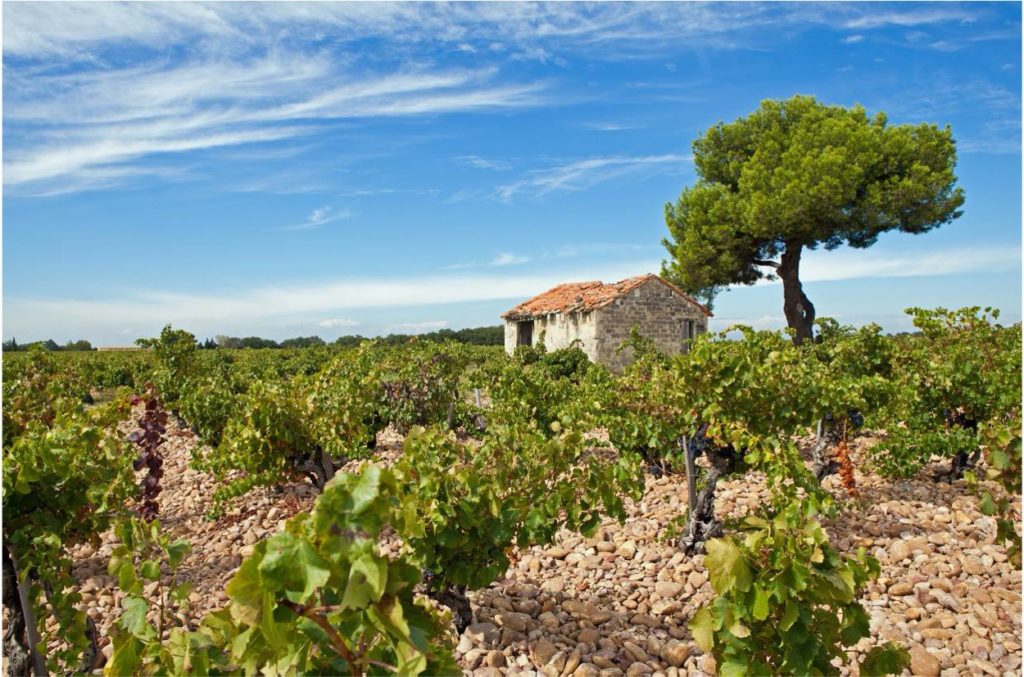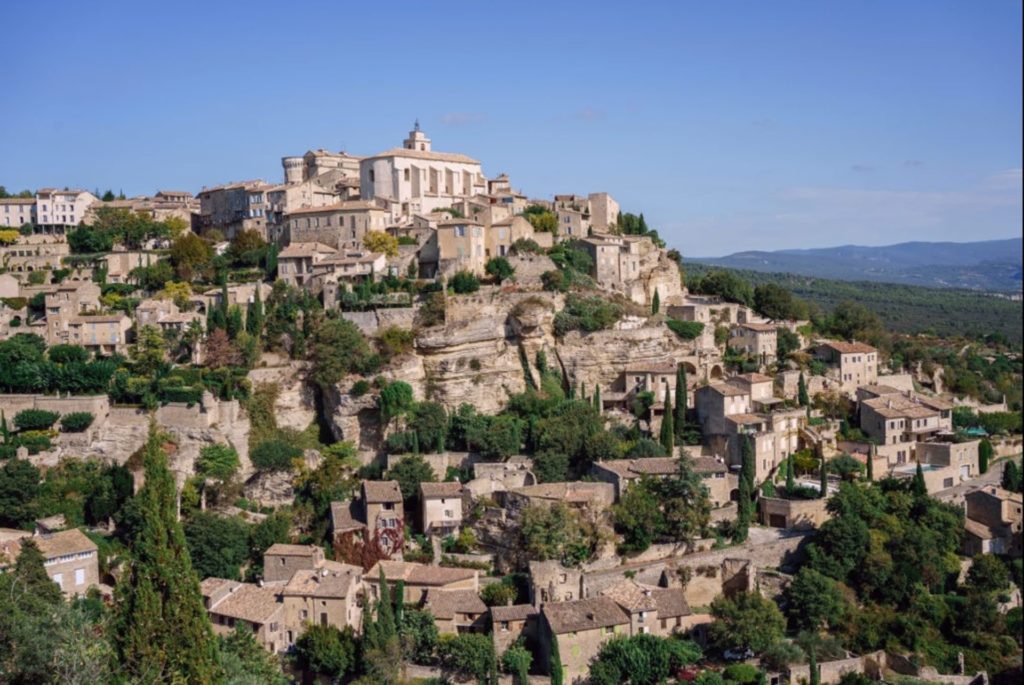
An insider’s guide to Côtes de Provence

There are two sides to Provence. One is the tourist cliché: lavender fields; superlative gastronomy; beautiful scenery and cloudless skies. The other is a land of enterprise and innovation—a region increasingly responsible for some of the most exciting wines being made in Europe today. In terms of dynamism and quality, Côtes de Provence is by far the most important name in the business.
Yet for decades, the South of France was largely ignored by the global wine community, discounting seasonal demand
for its sun-kissed rosé. A thriving tourist market provided a ready supply of forgiving customers, distracted by the
Mediterranean lifestyle. There was simply no imperative for winegrowers to up their game.
However, the region has transformed its viticultural landscape in recent years, propelled by a rash of investment.
Rising international competition from the New World has also played its part, encouraging significant leaps in
quality. Its most fashionable export remains the lightly coloured and very aromatic Côtes de Provence rosé wine, but
the red and white wines are also earning great respect for their quality.
Côtes de Provence started life in 1951 as a Délimité de Qualité Supérieure (VDQS), a designation that has since been abandoned. Promoted to full appellation status in 1977, the area under vine now encompasses 84 communes in the eastern half of the region. There are approximately 20,000 hectares under vine, producing red, white and rosé wine styles. If you want to explore Provence’s wine scene in all its glorious diversity, then you should get acquainted with Côtes de Provence.
Geography and terroir
Provence offers an outstanding and varied setting in which to fashion premium wines. The Côtes de Provence designation was created to reflect this, allowing growers from different sub-zones to market wines under the appellation. Instead of confining itself to one geographical area, Côtes de Provence covers seven distinct wine zones. These include vineyards situated northeast of Marseille, the southern slopes of the impressive Saint-Victoire mountain range, Mediterranean islands and the enclave of Villars.
This patchwork of different terroirs offers growers an unparalleled opportunity to produce excellent wine from a diverse palate of grape varieties. While the climate is textbook Mediterranean—warm to hot summers, mild winters—the topography is far from homogeneous. Some of the cooler sites can be found in the hills surrounding the commune of Seillans, northwest of Cannes.
The significant diurnal temperature variation helps to preserve acidity, making this terroir ideal for the production of fresh and saline white wines. Meanwhile, the warm schist soils that define vineyards planted along the eastern coastline can yield red wines of considerable potency and structure. Overall, calcareous soils tend to dominate inland from the Mediterranean, while metamorphic schist is more commonly found in coastal vineyards. The Provençal trademark is garrigue: infertile soils covered in thyme, rosemary and other wild herbs.
Sub-appellations
In 2005, the authorities decided to create three sub-appellations within the Côtes de Provence framework: Côtes de Provence Frejus; Sainte-Victoire; and La Londe. A fourth designation, Pierrefeu, was added in 2013. Only red and rosé wines can be produced under the rules, which stipulate tighter controls on the yield and production methods.
These sub-appellations were designed to express the superior terroir of four delimited zones, situated across eastern Provence. But they vary greatly in size. The Fréjus title covers less than 250 hectares, while the limestone vineyards of Saint-Victoire are spread across nine communes. The quality of wines produced in these four areas is exceptional.

Rosé
Scented rosé, delightful in summer but popular all year round, is Provence’s undisputed gift to the wine world. The style has become as emblematic of the region as its beautiful countryside. Today, about 80% of Côtes de Provence’s total output is rosé. For quality and consistency, Provençal rosé wine has few peers.
Nevertheless, there is no exact formula that has a grip on wine production in the region. Although most winegrowers use a blend of grape varieties, often including Grenache, Syrah, Mourvedre and Cinsault, the proportions can vary significantly. Additionally, certain producers favour the light maceration method in which crushed or broken red grapes are left in contact with the skins for a short period of time in a tank before the juice is run off and fermented. All the colouring pigments are found in the skins; the secret to making rosé is brief skin contact, extracting only the bare minimum of colour. But there is a school of thought that regards even this short maceration as unnecessary. Another approach is to press the grapes almost immediately after they enter the winery. When the must is released from the grapes, it absorbs just enough colour in the press to create a very pale style of wine.
While salmon-pink rosé is in vogue, there is also a market for more deeply-coloured and phenolic rosé wines. Here, the time-honoured saignée method comes into its own. Saignée, or ‘bleeding’, simply involves fermenting crushed grapes and juice together for one to three days before the must is run off. This method has stood the test of time— European winegrowers have been practising it for over a century.
Red
In the 20th century, Provence red wine was generally derided for its rusticity. However, better site selection, renewed interest from younger winemakers and global investment has transformed its reputation. Red wine now accounts for 15% of the total Côtes de Provence annual production and this is growing year on year.
Grenache, Syrah, Mourvedre and Cinsault are popular grape varieties, as well as Cabernet Sauvignon which was introduced in the 1960s from Bordeaux. The majority of red wines are blends, often emulating the Southern Rhone style by mixing Grenache, Syrah and Mourvedre. Provençal reds are full-bodied and aromatically expressive wines, with ripe tannins and good acidity.
White
Less than 6% of Côtes de Provence’s vineyards are used to make white wine. Thankfully, the small volumes that are exported are of extremely high quality. Grenache Blanc, Clairette and Vermentino are the most commonly encountered grape varieties, made in a way that would shock a Provence winegrower from the 1980s.
Ultra-protective winemaking has become standard among quality-focused producers, with cool fermentations designed to maximise the fruit and aromatic potential. When this technique is applied to grapes harvested from the cooler terroirs of northern Provence, the results are spectacular. A good Provençal white wine boasts a mouth-watering freshness, with an enticing bouquet of stone fruit, citrus and exotic fruit such as pineapple. Often attractively priced, they are de rigueur with Provence’s signature culinary delicacy: bouillabaisse.




